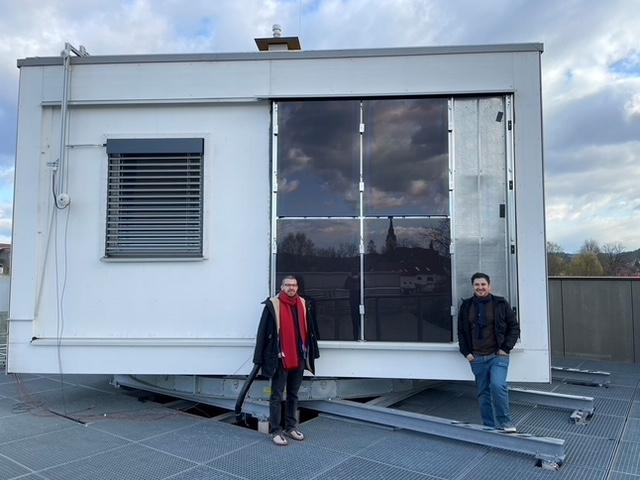Energy flexibility: UAS Technikum Wien project investigates new utilization concepts for renewable energy sources.

14 May, 2021
In the Flucco+ research project, a team from the University of Applied Sciences Technikum Wien is looking into the comfort of use in energy-flexible housing projects. The data collected will be used to improve the basis for planning in this area.
The future belongs to renewable energy sources. However, there is a major challenge in the development of utilization concepts for renewable forms of energy: “Renewable energies are volatile. That means they don’t always come in the quantities you need them, nor when you need them,” says Momir Tabakovic from the Renewable Energy Systems research focus area at the University of Applied Sciences Technikum Wien. One approach to solving this problem is the concept of “energy flexibility,” which Tabakovic and his colleagues Simon Schneider, Thomas Zelger, Daniel Bell and Jens Leibold are currently working on as part of the “Flucco+” research project funded by the FFG.
Relieving the strain on energy grids
In the future, energy-flexible buildings and neighborhoods should help relieve the burden on energy grids through appropriate equipment and design, as well as help reduce consumption through intelligent use. For example, if a little more energy is available, a building will be heated more; if less energy is available, the temperature will be reduced slightly. In this way, peaks or bottlenecks are to be compensated in interaction with technical measures – for example thermal component activation – as in a buffer system. However, it is important to bear in mind that users react with varying degrees of sensitivity to reductions in comfort caused by temperature fluctuations. “It is clear that the subjective perception of the occupants plays a major role here,” Tabakovic explains. The FHTW research project is therefore paying particular attention to this aspect.


Cooperation with PlusEnergy pilot projects
To this end, the project team conducted surveys among residents of energy-efficient pilot projects such as the plus-energy quarter “Sonnendorf” in Schwoich in Tyrol, the plus-energy quarter “Smart Block” in Vienna’s 17th district, single-family homes in Göllersdorf and the new residential quarter “Speicherstadt Mühlgrund” in Vienna’s 22nd district.
In order to obtain further data on the temperature perception of users, more than 20 test subjects also spent three days each in the “façade box” of AAE Intec in Gleisdorf (Styria) in recent weeks. Temperature fluctuations were simulated in a laboratory situation, while the test subjects had to record their subjective perception of comfort in detail every half hour.
Temperature limits and tolerances
In the next step, the project team will contrast the data from this series of experiments with those from the survey. “The goal here is to find out the limits and identify a tolerance range in which temperature fluctuations are ideally not even consciously perceived,” Tabakovic explains.
In a further project step, the researchers will analyze building associations of different uses in neighborhoods for additional potential.
Optimizing production and consumption within a building complex opens up the possibility of local balancing and lower use of energy (heat, electricity) from the grid. However, the contribution of flexibilities within a building complex to the integration of a high share of volatile renewables by coupling different sectors (electricity, heating, cooling and mobility) is only at an early stage of development. A holistic energy flexibility assessment based on three potential plus-energy quarters, – “Sonnendorf” in Schwoich in Tyrol, Werftareal Korneuburg and residential quarter “Speicherstadt Mühlgrund” – will be developed as well as heuristic methods for their optimization. From all the data collected, the FHTW team ultimately wants to develop a dynamic user comfort model and energy scenarios tailored to it. These will then be tested in practice and holistically evaluated in the partner projects in Tyrol, Lower Austria and Vienna.